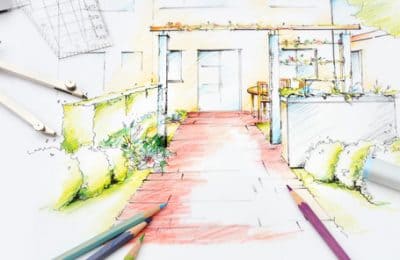Peat is an organic material that forms in the waterlogged, sterile, acidic conditions of bogs and fens. These conditions favour the growth of mosses, especially sphagnum. As plants die, they do not decompose. Instead, the organic matter is laid down, and slowly accumulates as peat because of the lack of oxygen in the bog. This makes peat a highly productive growing medium.
Peat is a major constituent of most horticultural growing media. It is well suited to a wide range of plant species and growing regimes, and is used particularly in the production of ornamental plants, such as container grown nursery stock, bedding plants, and strawberries.
It has been estimated that the horticulture industry accounts for about one-third (much of it imported) of all the peat used as growing medium in this country, with the remaining two-thirds used almost entirely by amateur gardeners. However, recent figures suggest that the overall volume of peat used by the commercial sector in England and Wales has fallen by some 10%.
The loss of peat bogs has now been recognised as a serious environmental problems and growers are being encourage to use alternatives wherever possible.
Since 1945, 94 per cent of lowland raised peat bogs have vanished. The main causes are afforestation, repeated burning, agricultural land improvement and peat extraction (Plantlife, 1991, Commission of Enquiry into Peat and Peatlands). The remaining lowland raised bogs in England are now protected areas but peat extraction for the horticulture industry does continue on some sites.
A little over 3% of the earth’s land surface is covered in peat, but not all peatlands are the same. Just as forests in Brazil, Canada and England are very different, so too are peatlands in Alaska, Indonesia and Europe, each supporting its own native plants and animals.
The importance of peatlands has been recognised by the European Union which has identified a number of bogs as priority habitats for conservation under the Habitats and Species Directive.
Peat bogs are also important because they ‘lock up’ carbon that would otherwise increase the greenhouse effect. Carbon, removed from the atmosphere over thousands of years, is released when bogs are drained and peat starts to decompose.
Horticultural Use of Peat
Between 1993-2001 the total supply of all horticultural and landscape substrates increased by 223%; from 2.42 million m3 in 1993 to 5.40 million m3 in 2001. Of this, peat consumption increased from 1.55 million m3 to 3.39 million m3 (219%); but peat alternatives increased at a greater rate from 0.87 million m3 to 2.01 million m3 (231%).
Of the total supply of materials in 2001 (5.40 million m3), 3.63 million m3 was used as growing media, with 1.77 million m3 supplied as soil improvers and mulches. Soil improver/mulch accounted for 33% and growing media 67% of the total market. Soil improvers/mulches mainly consisted of alternatives (94%) and growing media remain predominantly peat (90%).
However, although still a small proportion of the total, there has been a 66% increase in the use of peat alternatives in growing media since 1999 (including loam, which was reported for the first time in 2001). Bark (1.34 million m3 or 67% of alternative materials) and green compost (0.32 million m3 or 16%) were the most commonly used alternative materials in 2001. The use of commercially produced green compost as a soil improver/growing medium increased 40% between 1999 and 2001, with strong growth in competitor materials such as spent mushroom compost and wood waste, whereas the use of the more expensive cocoa shell and coir decreased.
Most of the growth in green compost usage has been in the amateur gardening, landscaping and local authority sectors, where quality requirements are less stringent than for professional growers.
Peat Alternatives
The main peat alternatives to peat are organic by-products from forestry, agriculture and horticulture (such as bark, wood fibre, wood waste, spent mushroom compost, cocoa shell and coconut fibre – coir), green compost and small and paper waste. Sterilised loam may also be used, and has particular appeal because of its ability to improve water and nutrient holding characteristics.
Today, because peat is available in so many forms and is put to so many uses, no single product can replace it, yet many alternatives are cheaper (often free) and may work better. Garden debris and green kitchen wastes can be composted to make a soil improver that will contribute more nutrients than sterile peat. There are also composts to buy, which are made from animal manure – a traditional soil improver, and other materials like wood-waste and bark. For mulching, peat is poor because it dries out and blows around. Chipped bark, shredded prunings, cocoa shells, straw and blanket mulches such as plastic sheets all make more effective and durable mulches. As a growing medium, commercial nurseries are finding that alternatives work well and are better than peat in some circumstances. Indeed, it is now widely accepted that sound alternatives already exist for most outdoor uses such as mulching and soil conditioning. Bulky materials such as straw, manure, leaf-mould or home-made compost can be used for such purposes; even grit or gravel may be employed where no nutrient content is required.
When looking at alternatives to peat it’s important to consider their environmental costs too. For example, waste products such as coir may incur heavy transport and fuel costs if you live a long way from the country of origin.

